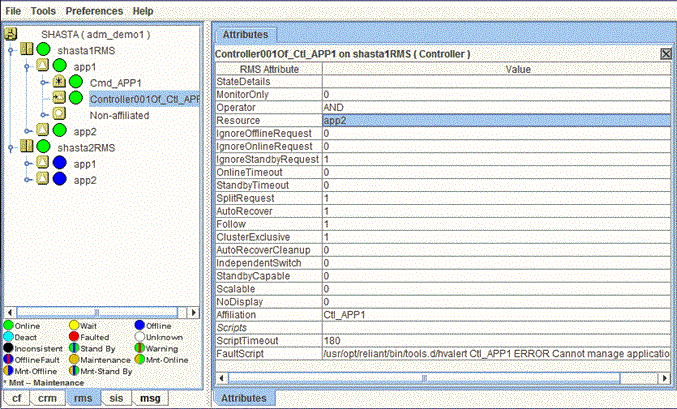The Cluster Admin RMS tree displays the configuration information for the cluster in a simple hierarchical format. The tree has the following levels:
Root of the tree
Represents the cluster. The root is labeled with the cluster name, followed by the RMS configuration name in parentheses. The cluster name is determined by your CF configuration.
First level
Represents the system nodes forming the cluster.
Second level
Represents the userApplication objects running on each of the system nodes.
Third level
Represents subapplications. Also contains groups of non-affiliated objects (andOP, orOP) (see the fourth level description).
Fourth level
Represents the resources necessary for each of the subapplications. Also contains non-affiliated objects (andOP, orOP).
Point
Non-affiliated objects (andOP, orOP) provide logical dependencies and group connectivity between nodes, applications, and subapplications.
If an application has subapplications, the fourth level represents resources used by that subapplication. If an application does not have subapplications, then the third level represents all the resources used by the userApplication.
Dependencies between applications are depicted in the RMS tree by the presence of controller objects. An example of an RMS tree with a controller object is shown in the following figure.
Figure 5.8 RMS tree with a controller object
